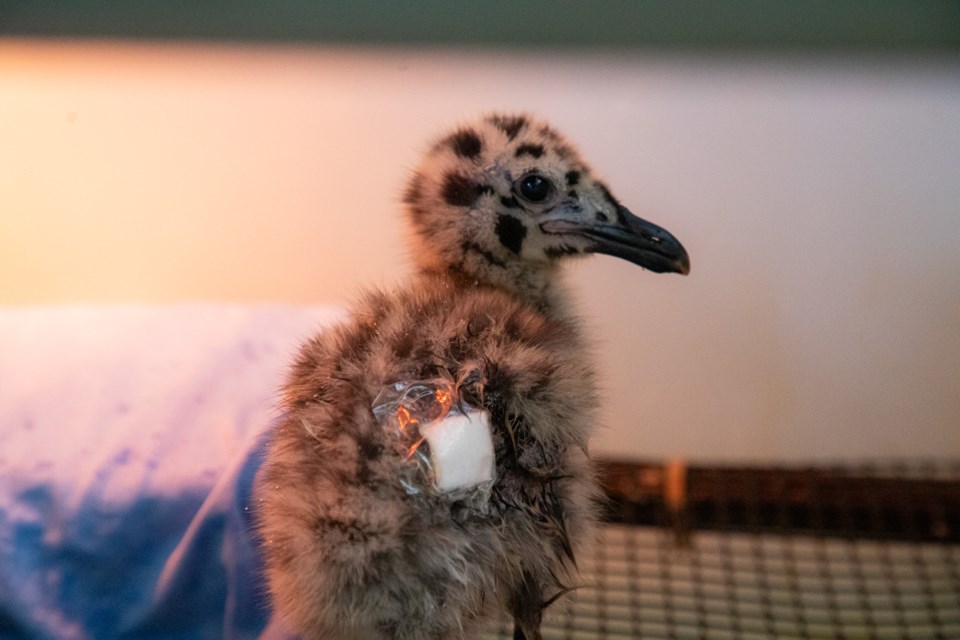Baby gulls are facing challenges resulting from the impacts of recent heat waves. With gull nesting season in full swing, Wildlife Rescue is seeing more and more young gulls admitted who have been orphaned or injured from falling from their rooftop nesting areas prematurely due to the heat.
Gulls have adapted to nesting on elevated areas, like the rooftops of buildings and condos in urban areas, because they are safe from ground predators. Young gulls will leave the rooftops on their own once they start flying. However, during heat waves, these rooftops can become deadly for flightless baby gulls.
“Problems arise during intense heat events. Rooftops become dangerously hot, so gull chicks will prematurely jump from their rooftop nest or can burn the bottoms of their feet or suffer hyperthermia,” said Jackie McQuillan, Wildlife Rescue’s Support Centre manager.
The baby gulls are often found with heat exhaustion and extremely dehydrated. Signs to look out for are panting, puffed up feathers, sunken eyes from being dehydrated, and acting very lethargic or sleepy.
Another concern for young gulls who have fallen to the ground or a balcony is being around people, especially in densely populated areas.
“It’s very important to limit interactions with young gulls because they are highly susceptible to becoming habituated to people. Keeping your distance and refraining from feeding is key to helping these birds stay safe in the wild,” explains McQuillan.
It is important to remember that gulls are a migratory bird species protected under federal legislation. It is a federal offence to tamper with a gull nest or disturb gull chicks.
If you are concerned about a gull’s well-being or encounter a young gull on your balcony, or the ground, please contact Wildlife Rescue through this on the organization’s website.
This article was written by Elin Molenaar, the communications assistant at Wildlife Rescue Association.



